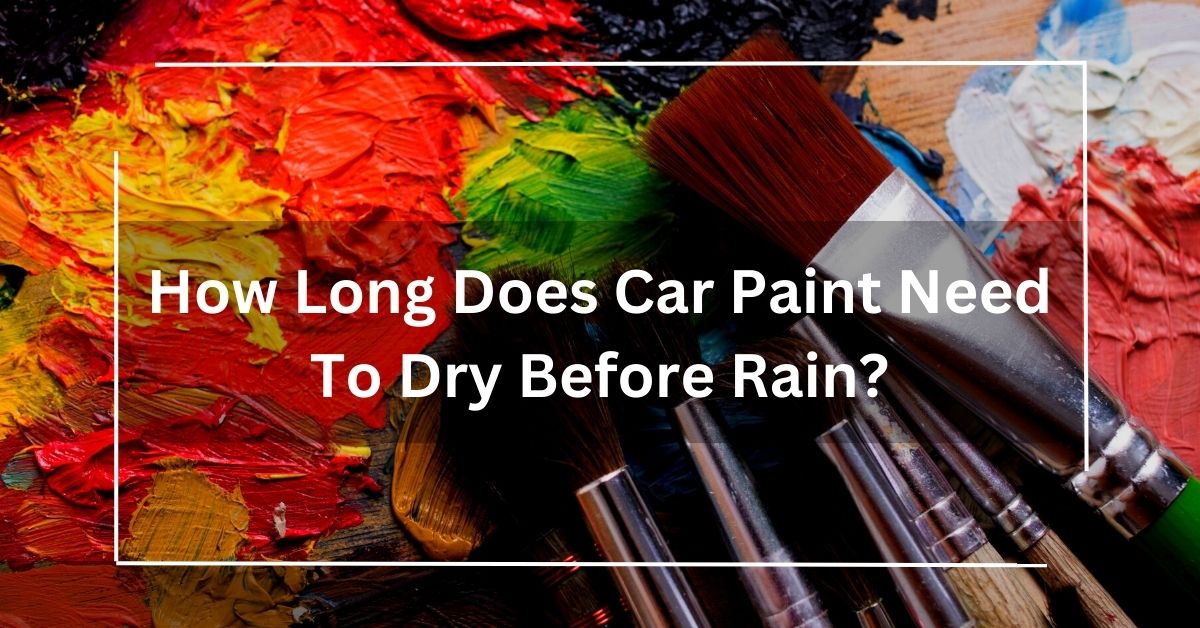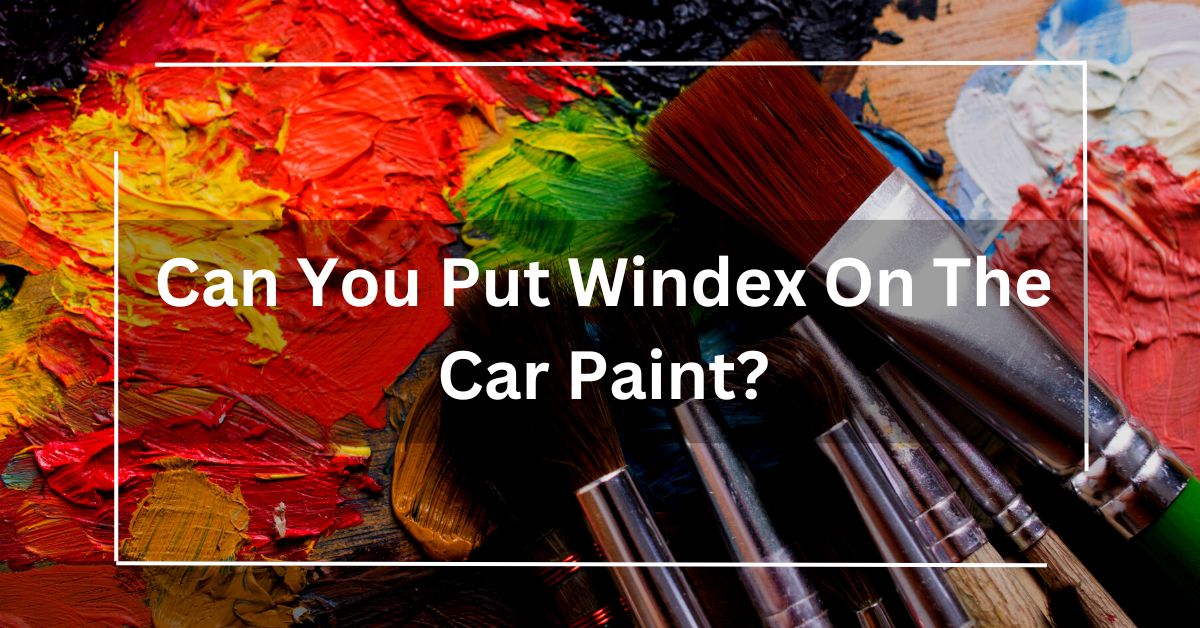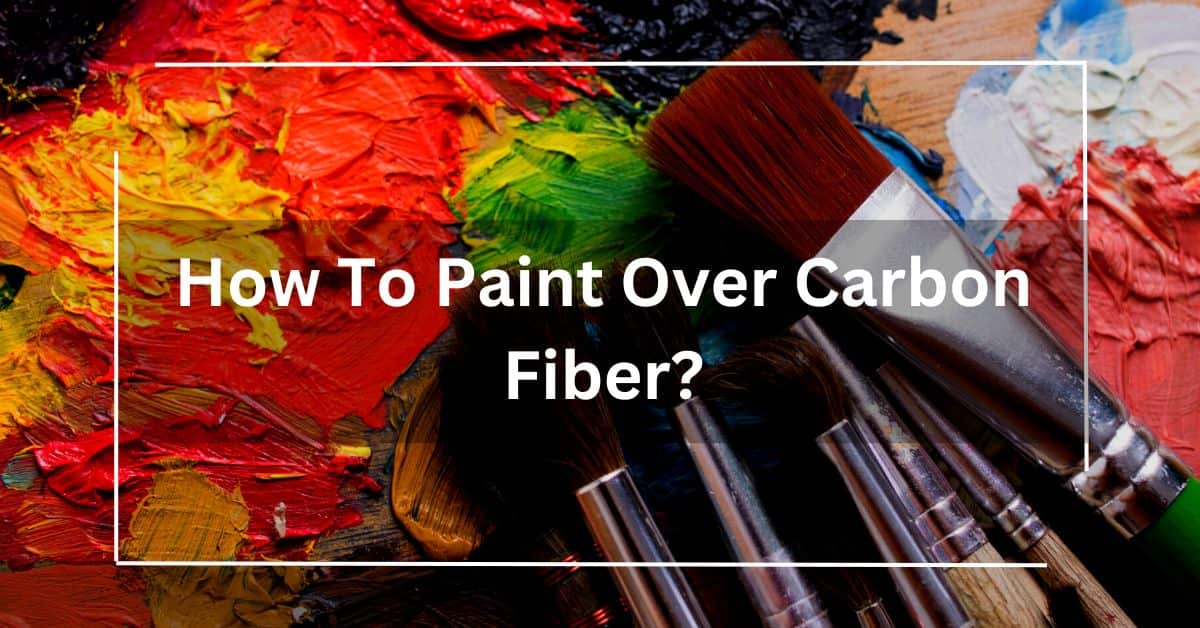If you’ve just had your car freshly painted, you might be wondering how long you need to wait before the rain poses a threat to your newly applied coat of paint.
Properly curing car paint is crucial to achieving a flawless finish and maintaining the longevity of your vehicle’s appearance.
Allow 24-48 hours for car paint to dry before it’s rain-resistant. Protect it from rain and follow manufacturer guidelines.
In this guide, we’ll delve into the factors that affect drying time, the steps to ensure your car paint is adequately cured, and some frequently asked questions to clear up any doubts you may have.
The Importance of Allowing Car Paint to Dry Properly
Applying a new coat of paint to your car can be a rewarding experience, giving it a refreshed and vibrant appearance. However, rushing the drying process can lead to undesirable outcomes such as uneven texture, peeling, and reduced paint longevity.
Adequate drying time is essential to ensure that the paint adheres uniformly, bonds effectively, and forms a strong protective layer against environmental elements, including rain.
How Long Should Car Paint Dry before Driving?
When wondering about how long to wait before driving after painting your car, it’s crucial to let the paint dry completely. Generally, it’s best to wait around 24 to 48 hours before driving your car.
This time allows the paint to fully cure and harden, ensuring a durable and smooth finish. Keep your vehicle in a well-ventilated area during this period to help the paint dry evenly.
Patience is key to achieving a long-lasting, attractive paint job that can stand up to the elements and everyday wear and tear.
How Long Does It Take for Car Paint to Fully Cure?
After applying new paint to a car, it typically takes about 30 days for the paint to fully cure. During this curing process, the paint goes through chemical changes that help it become more durable and resistant to damage.
While the paint may feel dry to the touch within a few hours, it’s important to give it ample time to harden and reach its maximum strength.
Avoid exposing the freshly painted car to harsh weather conditions, excessive sunlight, or abrasive materials during this curing period. This patience ensures a longer-lasting and better-looking paint job for your vehicle.
Will Rain Damage A Freshly Painted Car?
Yes, rain can potentially damage a freshly painted car if it occurs too soon after the paint job. It’s best to avoid exposing a newly painted car to rain for at least the first 24 to 48 hours, or as recommended by the paint manufacturer.
Water droplets can leave marks on the paint surface or even cause the paint to run or bubble if it hasn’t had sufficient time to cure and harden.
To protect the quality of the paint job, it’s advisable to keep the car in a sheltered area and allow the paint to fully set before exposing it to rain or other environmental factors.
Factors Affecting Car Paint Drying Time
1. Environmental Conditions
The weather plays a significant role in determining how quickly your car paint dries. In humid or damp conditions, drying time is likely to be extended. Conversely, in dry and warm conditions, the paint may dry relatively faster.
2. Type of Paint
Different types of automotive paints have varying drying times. Water-based paints tend to dry more quickly than solvent-based ones. Always refer to the manufacturer’s guidelines for specific drying times.
3. Application Method
The method used to apply the paint can impact drying time. Spray-on paints generally dry faster compared to brush-on methods due to their even distribution and thinner layers.
The Ideal Drying Time
1. Base Coat vs. Clear Coat
Car paint is typically applied in multiple layers, with the base coat being followed by a clear coat. The base coat usually dries within 30 minutes to an hour, while the clear coat may take a bit longer – around 24 hours.
Ensuring Proper Paint Curing
1. Avoiding Moisture Exposure
Moisture can negatively affect the drying process, leading to uneven drying and potential damage. To avoid this, keep your car in a dry, covered area for the recommended drying period.
2. Allowing Sufficient Time
While a paint layer might feel dry to the touch, it doesn’t necessarily mean it’s fully cured. It’s essential to give the paint ample time to harden and bond completely with the surface before exposing it to rain or other elements.
Protecting Your Car Paint
1. Use of Paint Sealants
After your car paint has fully cured, consider applying a paint sealant. Sealants provide an extra layer of protection against rain, UV rays, and other environmental factors.
2. Regular Maintenance
Proper car paint maintenance is key to preserving its appearance. Regularly washing and waxing your car helps maintain the protective layers and keeps your vehicle looking fresh.
Tips to Protect Your Car’s Paint from Rain
- Plan Ahead: Check weather forecasts before starting a paint job to ensure rain isn’t in the forecast within the next 48 hours.
- Use Sheltered Areas: Whenever possible, park your car in a garage or covered area to shield it from rain during the drying process.
- Choose the Right Paint: Opt for high-quality automotive paints that are known for their durability and resistance to weather elements.
- Thin Coats: Apply multiple thin coats of paint rather than a single thick coat to promote faster drying.
- Follow Manufacturer Guidelines: Adhere to the recommended drying times provided by the paint manufacturer to achieve the best results.
Frequently Asked Questions
1. Can I accelerate the drying process?
It’s recommended to follow the manufacturer’s instructions to avoid compromising the paint’s quality.
2. What if it starts raining before the paint is fully cured?
Rain can potentially damage uncured paint, leading to imperfections. It’s best to keep your car sheltered until the paint has fully cured.
3. Is there a way to check if the paint is fully cured?
Gently press your fingernail against an inconspicuous area of the paint. If it leaves an indentation, it’s not fully cured yet.
4. Can I apply another coat of paint if rain damages the first one?
It’s advisable to consult a professional before applying additional coats over damaged paint to ensure proper adhesion and finish.
5. Can I use a hairdryer to speed up the drying process?
While a hairdryer might seem like a quick solution, it’s not recommended as it can lead to uneven drying and potential damage to the paint.
Read: Can You Put Windex On The Car Paint? || All You Need To Know In 2023
Conclusion
In conclusion, the drying time of car paint before rain depends on various factors, including environmental conditions, paint type, and application method. To ensure a flawless finish and long-lasting results, it’s crucial to allow sufficient time for the paint to fully cure before exposing your vehicle to rain. Remember, protecting your car paint through proper maintenance and use of sealants will help maintain its appearance and protect it from the elements.
Related Articles



